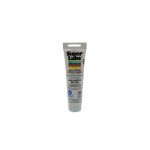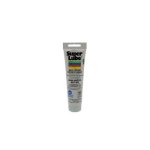I have been reading the thread and appreciate all of the stories and recommendations....and wanted to add to it, again.
I grew up as part of a 3-in-one oil / WD40 generation. These were the products that everybody had and used.
I have soured on WD40 - it just does not last in my experience. I was cleaning some bathroom fans that had become very noisy. When finished, I used WD40. All was well for about 3-4 months and then they started getting noisy again....and I did a brief cleaning and used WD40 again...and they are quiet again. That experience and
this thread is how I decided that I need to learn more about lubricants. After spending a lot of time reading, I am now understanding that there are, indeed, better lubricants for particular situations, but still, it is not easy to make the determination. Thus, all of the personal experiences are important, so thank you.
First off, I have learned that many popular brand names may have started out as a single product but have branched out into dozens of products so that many additives that get a buzz are added - take a look at all the 'varieties' of WD40
here. This appears to be a universal marketing strategy that has two levels; 1) target a specific use, ostensibly for the less sophisticated user and 2) target a particular additive, ostensibly for the more sophisticated user.
But, there are always caveats For example, the Molykote EM-30L, that was used in the video, does not contain any MoS2 at least based on the SDS
here. It appears to be a lithium grease with an additive....with a usable life (unopened) of 36 months from date of manufacture [from
here], that does not address how long it works in the application. It looked like a winner at first - the vid said something similar was used in the apple drives and it is especially good for plastic/plastic gears and so on. I took it out of my amazon list.
I am shying away from the white lithium grease in general because of its limited longevity, which was mentioned, and the mess it leaves when it dries out. I am convinced, with more speculation than facts, that this was the stuff I was cleaning out of old
atari paddle pots.
I found that I had some laboratory-grade silicon grease and that went into the collection.
I bought some superlube with ptfe.
I bought some B'laster silicon spray with an additive (but not teflon, like the DOW product). This is going to be used on the bathroom fans AFTER I clean the WD40 out. Depending on what I learn, i might use this on the rails of a floppy drive (spraying on an applicator first).
I bought some MoS2 (not MoS4 as originally mistakenly written) to play with. These have 1-2 micron particles. I absolutely believe that the stuff is a mess to work with. Still, I couldn't resist (must be the 10 year old Gilbert chemistry set effect).
The basic DriSlide general use product does have MoS2 and it *seems" like the prep is designed to spread the particles on evenly and then evaporate leaving the MoS4 "clinging" to the material - see
here. I like this idea and that
@ldkraemer has used it for decades adds to the appeal. I have some in my list.




